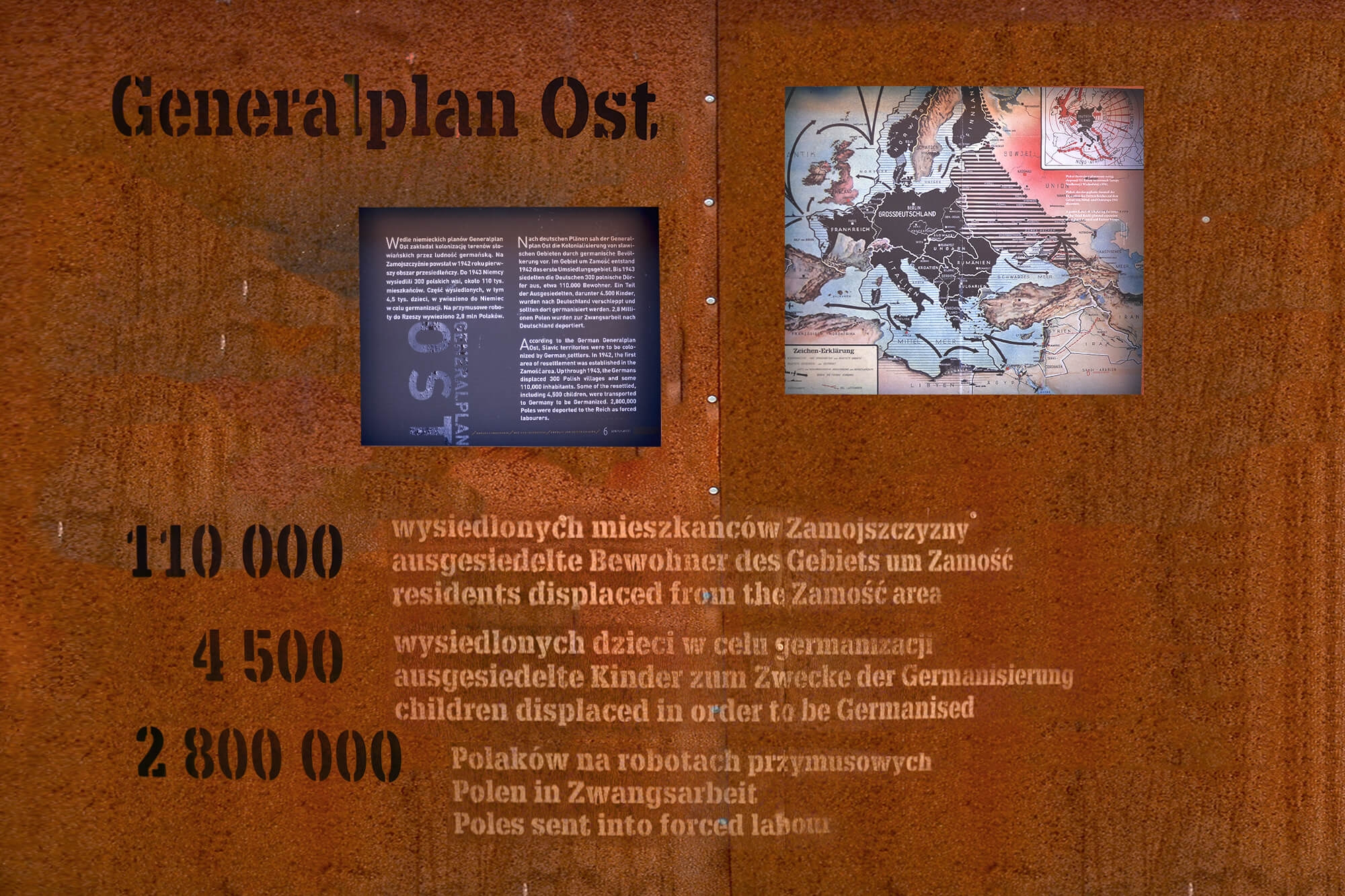Courage and
reconciliation
-
What was the Generalplan Ost?
With the beginning of the war against the Soviet Union in June 1941 it seemed possible to realize the National Socialist´s idea of conquering “living space in the East”. For this purpose the population of certain territories should be displaced up to the Urals and Germans should be resettled there. Other inhabitants of the Eastern countries should be enslaved. The Generalplan Ost summarized steps for practical implementation of these projects. However, they were only implemented in the area of Zamość, which is located in South-East present-day Poland. Even there its success was short-lived due the lack of a sufficient number of police and military forces for the protection of the resettled Germans. They were needed elsewhere because of armed resistance (→ Underground State). A German victory was necessary for the plan to work. 1943 marks the turning point of the war. At that time it became clear that implementing the Generalplan Ost had ultimately failed.
-
What kind of map do you see here?
The map is part of a propaganda poster from 1942. It was commissioned by the Reich Propaganda Ministry of the NSDAP (National Socialist German Workers’ Party) under the title “The new Europe is unbeatable”. Here the war is justified as a defensive war. The small map in the upper right shows the "encirclement" of Germany, Austria and Italy by states which supposedly planned and started a war against these countries. The large map shows Germany and its allies – the so-called axis powers – and the territories occupied by them (black areas) in the current war situation in 1942. The black arrows to the East show the extent of the occupation in the East and therefore in the thrust direction of the Generalplan Ost.
-
Forced labour and compensations
During the war about twelve million people were forced to work in Germany, of which about 2.8 million were Polish. There was an obligation to work for all 14-60 year-old inhabitants of the Generalgouvernement (General Government). People were gathered in raids and deported to the German Reich. They were often treated inhumanely and were forced to work physically ten hours per day or more without a sufficient food supply. The compensation of foreign forced labourers was postponed after the war and was supposed to be a part of the reparation issues to be clarified in a peace treaty after the war. With the Two Plus Four Agreement in 1990, this issue came up again. In 1998 negotiations began to set up a compensation fund amounting DM 10 billion, which was financed in equal shares by the German government and German companies. Only starting in 2001 a symbolic payment of compensations was issued to former forced labourers, including 484,000 Poles.
Forced labour also took place in Kreisau: “During the war a work camp was established in the large neighboring village of Gräditz. At first French prisoners of war were housed there. When our workload was heavy, some of these prisoners also worked for us. Later, Russian prisoners of war arrived; they seemed to be treated worse, and so we made soup for them at noon on the farm. The Russians did not stay long with us. Finally, there were also Jews in the work camp. They never worked for us (…) We did not yet know that they were doing work that would ultimately end with their deaths.” (Freya von Moltke: “Memories of Kreisau and the German resistance“)



